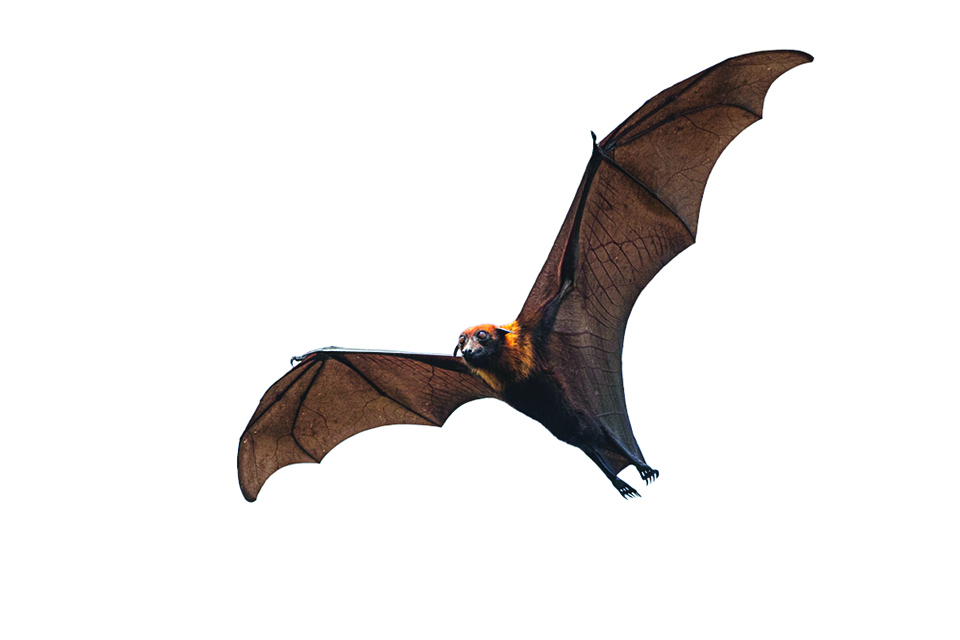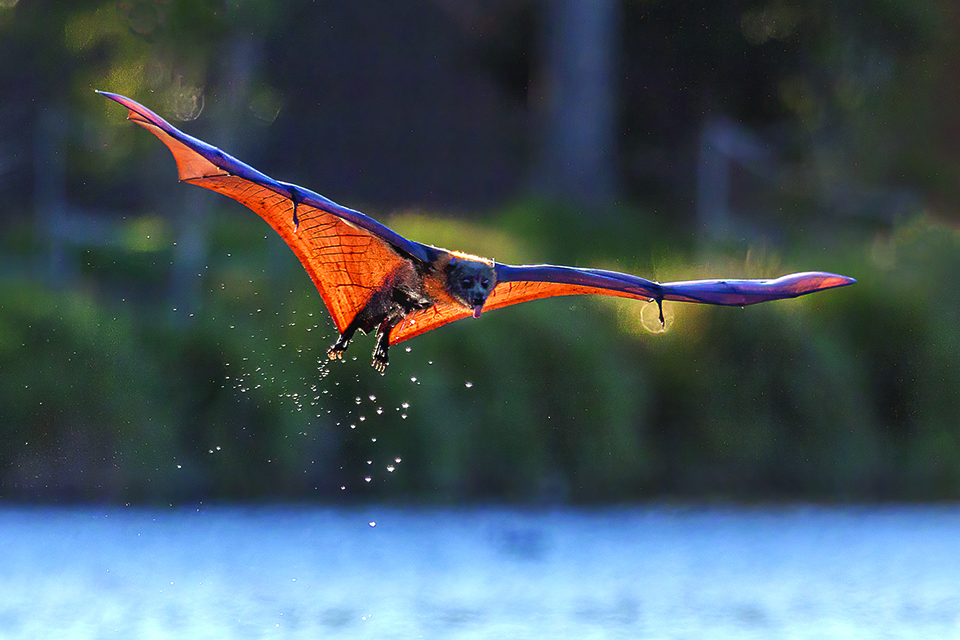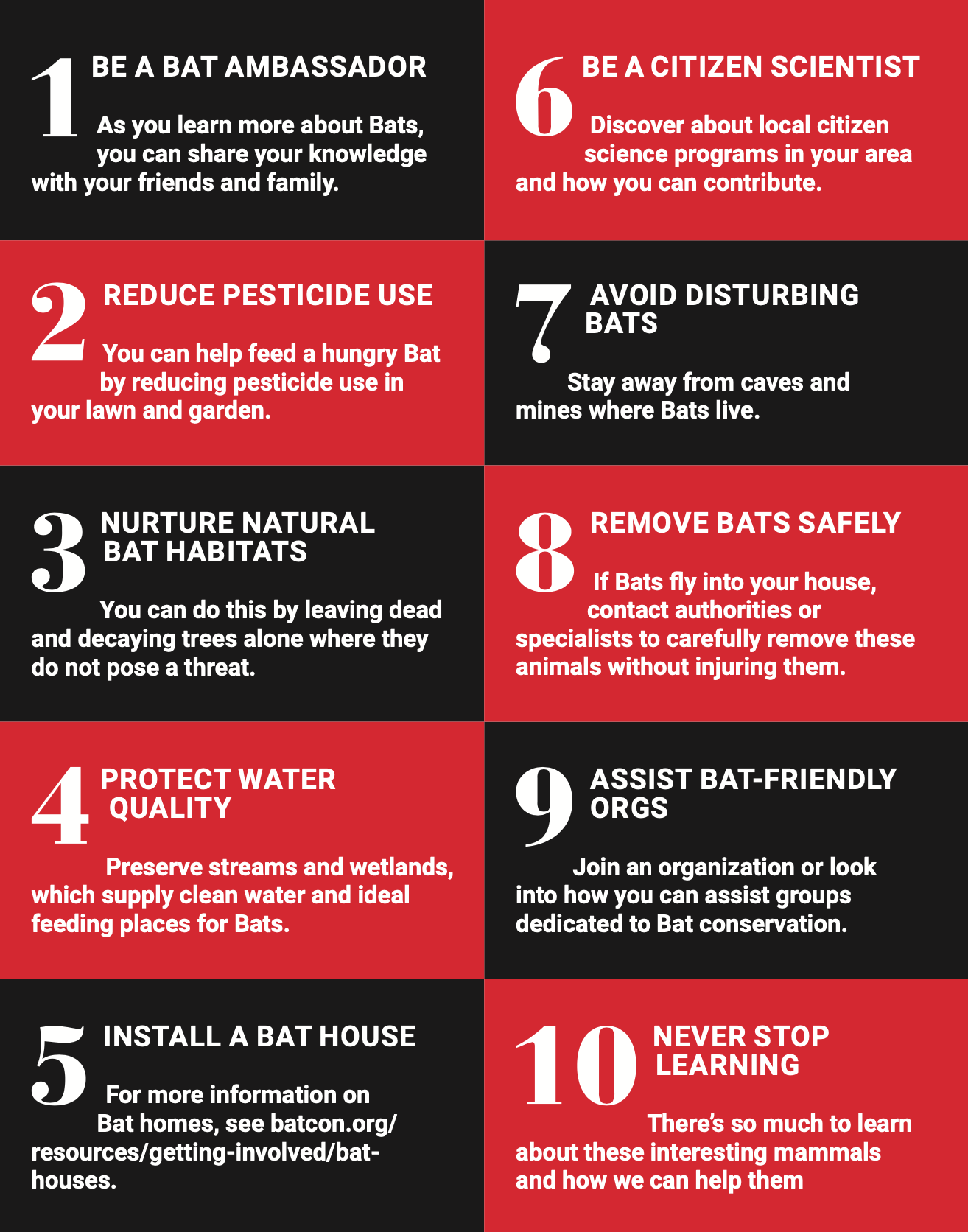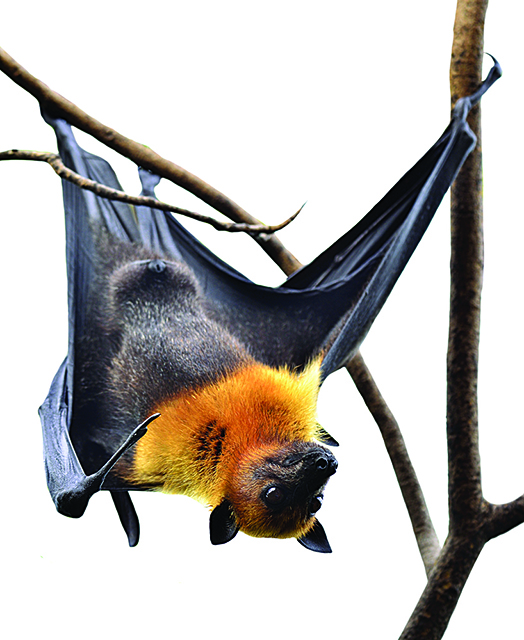Bats — Paniki in Filipino — are extraordinary mammals who have modified forelimbs that have evolved into wings. Belonging to the order Chiroptera, a term that stems from the Greek words chiro and ptera literally translating to “hand wings,” they are the only order of mammals capable of flight (Wund and Myers, 2005).
Bats can be classified as either frugivores or insectivores based on their diet. Frugivores are animals that predominantly feed on fruits and other plant components such as roots, stems, and seeds, whereas insectivores are animals that primarily feed on insects and are often diminutive in size, according to a 2005 article by Matthew Wund and Phil Myers for Animal Diversity Web.

MYTH BUSTED
Contrary to widespread belief rooted in the supernatural and also in pop culture hype, Bats do not spend eternity wreaking havoc upon unsuspecting victims.
Mammalian lifespans often correlate with body size: Smaller animals have shorter lifetimes, whereas bigger mammals live longer lives.
However, Bats are the only mammals who do not fit into this category, as they may live for more than 30 years in the wild — but definitely not for eternity!

WHERE ARE THEY FOUND?
Bats live in most places in the world in both tropical and temperate countries, with the exception of remote islands and polar regions.
There are 79 known Bat species in the Philippines: 38 of them are endemic, 12 are threatened, and 26 of them are Fruit Bats sometimes referred to as Flying Foxes.
WHY DO THEY MATTER?
Bats are important members of our ecosystem, because they eat insects who might spread illness or cause agricultural damage. Their excrement can also be used to fertilize crops.
Pollination and even ecotourism is aided by Frugivore Bats.

ARE THEY A MENACE TO SOCIETY?
Despite the various roles Bats play, they still manage to have a bad reputation. This can mainly be attributed to their association with the supernatural, among other things.
Their association with vampires as nocturnal creatures is almost always at the forefront of mythology. This connection began as early as the 16th century in Eastern Europe when vampire Bats were seen feeding on the blood of Cattle.
When Bram Stoker’s Dracula came out depicting vampires taking the form of Bats, it cemented the relationship of the two forever, a scene that lives on to this day, as detailed by Ming En in 2018 on her blog.
Aside from vampires, Bats are also sometimes attributed to witchcraft. While the roots of this affiliation remain shrouded in mystery, it is thought that it stems from the concept that witches worshipped horned beings with wings that resemble our severely misunderstood nocturnal friends.
Unfortunately, the negative connotations do not end with the otherworldly as they also receive backlash from misguided medical paranoia.
There is no denying that Bats can serve as a reservoir of several pathogenic agents, such as Rabies virus, Ebola virus, Marburg viruses, Severe Acute Respiratory Syndrome and Middle East Respiratory Syndrome coronaviruses, Bartonella sp., and Pasteurella sp., just to name some. But these Bat-associated infections can be attributed to the overlapping of Bat and human habitats, which is mostly due to the encroachment of human activity on wildlife territory, as explained by Nerino Allocati, A.G. Petrucci, G. Di Giovanni, and Michele Masulli in their 2016 article published in the journal Cell Death Discovery.

WHAT CHALLENGES DO BATS FACE?
Bats confront a variety of hazards, including habitat damage and disturbance, as well as pesticide usage, which affects the insect and plant products on which Bats feed.
Bats are being slaughtered all around the world for food, their skin, and even for their alleged healing capabilities, according to a 2018 article by Dina Maron for National Geographic. They are also being killed by farmers as they are considered crop pests.
THREATENED EXISTENCE
The International Union for the Conservation of Nature has considered 25% of all species within the order Chiroptera (with nearly 240 species in total) as having a threatened status, with at least 12 species having gone extinct recently.

=
10 THINGS YOU CAN DO TO APPRECIATE BATS
Every year on April 17th, International Bat Appreciation Day reminds us of why Bats matter. Here are ten things you can do to show your support and care for the Bats, according to the US. Fish and Wildlife Service.


FILIPINOS FOR FLYING FOXES
Filipinos for Flying Foxes is a collaboration among Bat Count Philippines, Philippine Biodiversity Conservation Foundation, and Mabuwaya Foundation, It has resulted in a group of early-career biologists, students, and non-profit organizations working together to promote the conservation of Large Flying Foxes in our country, according to a 2015 article by
P. Godfrey Jakosalem for the Philippine Biodiversity Conservation Foundation, published by Conservation Leadership Programme.
The initiative works to protect bat roost sites and communities, according to Bat Conservation International.
BAT CONSERVATION INITIATIVES
Bat Conservation International knows that in order to protect the Golden-Crowned Flying Fox, changing attitudes and traditional practices are also needed aside from, of course, conserving the Bat’s habitat.

MERELY MISUNDERSTOOD
We hope that what you’ve read thus far has shed some light on these fantastic winged creatures, perhaps opening your eyes to their plight and the challenges they face due to ignorance and misguided beliefs.
Bats are not only essential to the ecosystem, but also have a right to be in this world, the same as you and me. They are not a menace to society if we let them be.
Despite the widespread portrayal of Bats in mainstream media, they are neither eerie nor spectral — and they do not belong to the realm of the supernatural. They are not scary creatures that go bump in the night.






